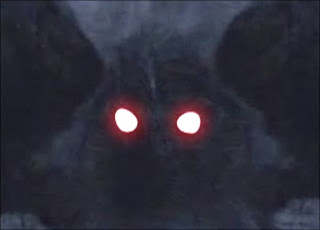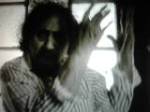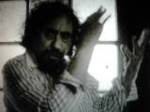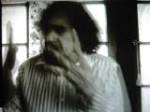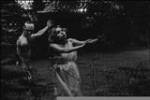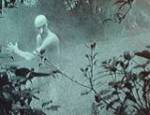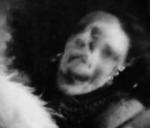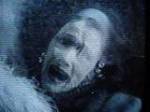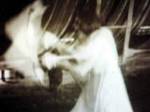Strange mystery spheres found on Mars! What are these strange Martian spheres?
Curiosity might have been hitting the headlines lately but on a
different part of the Red Planet its fellow rover Opportunity is still
going strong. The latest images returned show a dense concentration of
strange spherical shapes on the Martian surface. The spheres are similar
to those found by Opportunity in 2004 ( nicknamed 'blueberries' ) but
there are stark differences.
Eight years ago, NASA's Opportunity rover came across strange-looking
spheres that were nicknamed Martian blueberries — and now the Mars
rover has sent back a picture showing a different flavor of berry that
has the experts scratching their heads.
"This is one of the most
extraordinary pictures from the whole mission," Cornell astronomer Steve
Squyres, the rover mission's principal investigator, said today in a news release.
The
golf-cart-sized Opportunity rover used the microscopic imager on the
end of its robotic arm to take a super-close look at the spherical
shapes. These particular berries, measuring as much as one-eighth of an
inch (3 millimeters) in diameter, cover an outcrop called Kirkwood in
the Cape York segment of Endeavour Crater's western rim.
"Kirkwood is chock full of a dense accumulation of these small
spherical objects," Squyres said. "Of course, we immediately thought of
the blueberries, but this is something different. We never have seen
such a dense accumulation of spherules in a rock outcrop on Mars."
Iron-rich Martian blueberries first came to light
soon after Opportunity headed out from its landing site on Mars'
Meridiani Planum in early 2004. The fact that they have layers of a
mineral called hematite suggests that the spherules were formed by the
action of mineral-laden water percolating through rocks. That's how
similar spherules formed on Earth, where they're known as thunderballs, shaman stones or Moqui marbles.
Since
then, Oppy has run across the blueberries (which are actually gray)
many times. A couple of years ago, the rover spotted an unusual spread
of blueberries that were so tightly packed that scientists called it a "blueberry sandwich."
Some scientists say the berries could become important in the search for signs of life on Mars: In the August issue of the journal Geology,
researchers from the University of Nebraska and the University of
Western Australia contend that microbial activity played a part in the
formation of iron spherules on Earth — and may have played a similar
role on the Red Planet. Spherules with an iron-rich exterior and an
iron-poor core could "offer a macroscopic target in the search for life
on Earth as well as Mars," they wrote.
Crunchy on the outside, soft on the inside
Last
week's discovery adds a new twist to the berry investigation. Many of
the spheres on the Kirkwood outcrop have been broken open and eroded by
the wind, NASA said. The eroded berries show signs of a concentric
structure. To investigate further, Opportunity aimed its Alpha Particle
X-Ray Spectrometer at the berries and analyzed their elemental
composition. The preliminary analysis indicates that the recently found
spheres do not have the high iron content seen in the original Martian
blueberries.
"They seem to be crunchy on the outside, and softer
in the middle," Squyres said. "They are different in concentration.
They are different in structure. They are different in composition.
They are different in distribution. So, we have a wonderful geological
puzzle in front of us. We have multiple working hypotheses, and we have
no favorite hypothesis at this time. It's going to take a while to
work this out, so the thing to do now is keep an open mind and let the
rocks do the talking."
There's plenty to investigate around the
place where Opportunity is now: Just past Kirkwood, there's an
intriguing pale-toned outcrop in an area where orbital observations have
suggested clay minerals are present. That's another sign that the
region's geology was influenced by the presence of water in ancient
times.
It's been eight and a half years since Opportunity dropped
onto the Martian surface, cushioned by a layer of bouncy airbags.
Opportunity and its twin on the other side of the planet, Spirit, were
expected to last at least three months.
Both of those rovers became
overachievers. Spirit finally gave up the ghost just a couple of years
ago, but Opportunity is still going strong at 14-mile-wide
(22-kilometer-wide) Endeavour Crater. This week, the team behind Spirit
and Endeavour received the prestigious Haley Space Flight Award for pioneering "new techniques in extraterrestrial robotic system operations."
After weathering another Martian winter, Opportunity is raring to go.
"The
rover is in very good health considering its eight and a half years of
hard work on the surface of Mars," John Callas, project manager for the
rover mission at NASA's Jet Propulsion Laboratory, said in today's
news release. "Energy production levels are comparable to what they
were a full Martian year ago, and we are looking forward to productive
spring and summer seasons of exploration."

NASA / JPL-Caltech / Ed Truthan / North Coast Graphics
A
3-D picture from the Curiosity rover's hazard avoidance cameras shows
the rover's shadow in the foreground, and a 3-mile-high mountain in the
far background. Use red-blue glasses to see the 3-D effect.

Michael Howard
A stereo image shows the terrain in front of NASA's Curiosity rover. Use red-blue glasses to get the 3-D effect.

NASA / JPL-Caltech / Ed Truthan / North Coast Graphics
A
3-D view from Curiosity's rear hazard avoidance cameras shows one of
the rover's wheels in the foreground, and its tracks leading back toward
the horizon. Use red-blue glasses to see the 3-D effect.
Curiosity on the move
Meanwhile, thousands of
miles away, NASA's Curiosity rover is on the move after completing the
checkouts on its robotic arm. Curiosity, which arrived on Mars a little
more than a month ago, is about twice the size of Opportunity — and
thanks to its nuclear power source, it could theoretically last for
decades.
The rover is heading for its first major destination: a
geologically interesting spot called Glenelg, roughly a quarter-mile
(400 meters) away from its landing site in Gale Crater.
NASA reported today
that Curiosity "perambulated over 105 feet (32 meters) of unpaved Gale
Crater" over the past Martian day, or sol. It has put 466 feet (142
meters) on its odometer, and is roughly a quarter of the way to Glenelg.
This
week, Curiosity turned its Mastcam imaging system toward the sun, to
watch the Martian moon Phobos pass over the solar disk during the Red
Planet's equivalent of a partial solar eclipse. Hundreds of thumbnail images
were sent back to Earth, but the resolution wasn't sharp enough to show
the eclipse. We'll have to wait until the full-resolution images are
transmitted to gauge the success of Curiosity's eclipse-watching
session. The timing of that transmission is dependent on where it's
placed on the mission team's data priority list.
There'll be at
least a couple of additional opportunities for eclipse-watching from
Mars over the next few days. "This occurrence of transits happens twice
per Martian year, which is once every Earth year," deputy project
scientist Joy Crisp said during a teleconference on Wednesday, "so we
did really want to scramble this time to try to take images."
The
transit observations are something of a sideshow for Curiosity's $2.5
billion, two-year primary mission. The rover's main objective is to
study Martian soil and rock for the chemical signatures of potential habitability.
After spending a few weeks at Glenelg, the rover is due to
begin a 12-mile (20-kilometer) odyssey to reach the flanks of a
3-mile-high (5-kilometer-high) mountain in the middle of Gale Crater,
known as Aeolis Mons or Mount Sharp. The layers of rock on that
mountainside could preserve the biggest geological record ever studied
on Mars, going back billions of years — and provide new pointers in the
search for traces of life on Mars.

NASA / JPL-Caltech / Cornell / USGS / Modesto Junior College
A
photo from the Opportunity rover's Microscopic Imager shows strange
spherules covering a Martian outcrop nicknamed Kirkwood. The view covers
an area about 2.4 inches (6 centimeters) across.



















